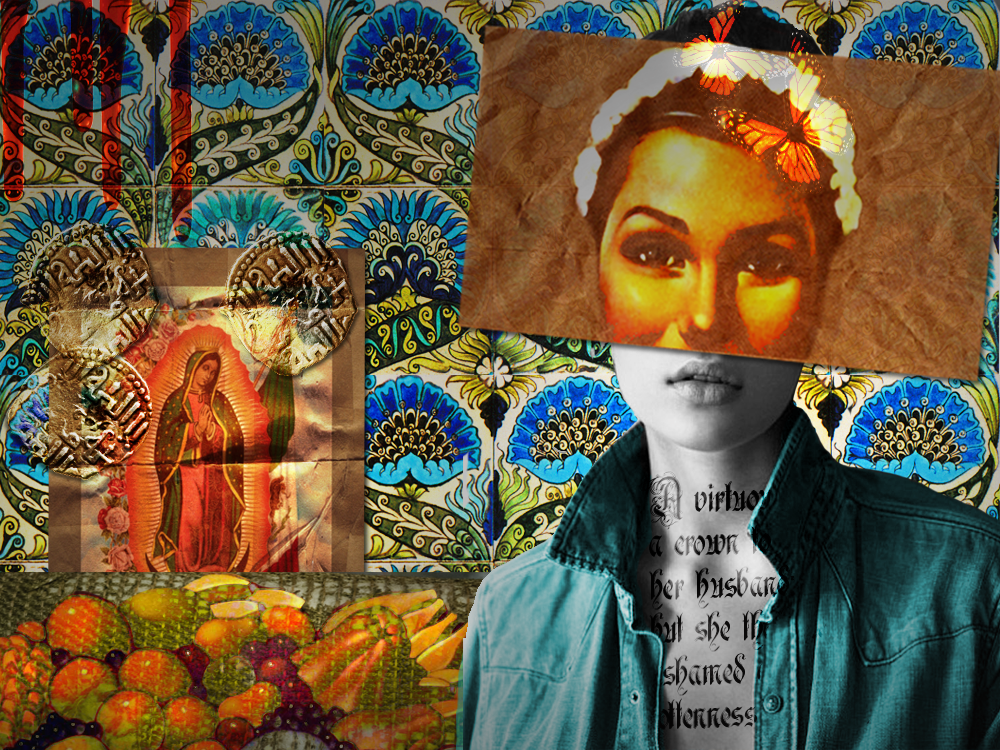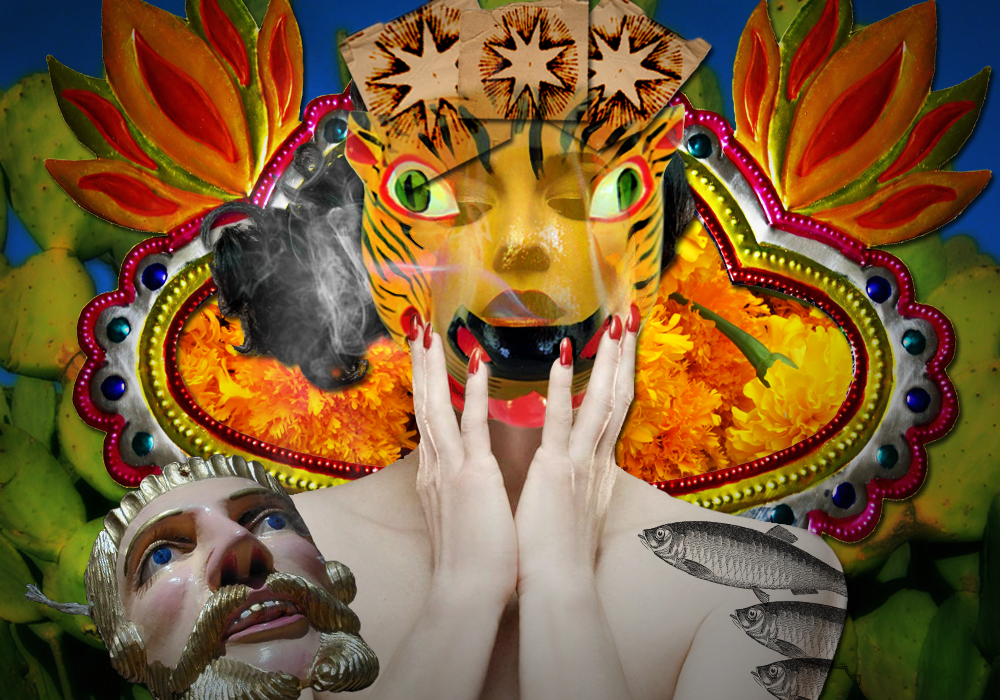“An intellectual is someone who manages to leverage authority gained from peers in one field of knowledge or culture to become a publicly recognized authority on fundamental…public issues”
Yvon Grenier Octavio Paz: An Intellectual and his Critics
One of the most prestigious intellectual feuds of 20th century Mexican literature is that between Carlos Fuentes and Octavio Paz. While it was not my intention here to describe in detail their personal histories, any investigation into contemporary Mexico – either artistically or politically – would be incomplete without acknowledging the profound impact these two writers have had on the Mexico which exists in the international psyche today. In an effort to explain the complexity of Mexico and its furious desire to express an identity it would be impossible not to describe at least the shadows of how these writers became publicly recognized authorities of such a contradictory desire. A desire which is further frustrated by the impossibility of reconciling a duality which began with the first child fathered by Spanish soldiers in the “New World” and continues with the struggle to move beyond that history without denying it as the foundations for a different kind of future.
Paz and Fuentes had in common many formative political, philosophical, and creative experiences – both men initially studied law but later abandoned the discipline for writing, both supported Castro initially and later condemned him, both worked as ambassadors (Fuentes to France and Paz to India), and both resigned in protest against the Mexican government, both accepted teaching positions at Harvard (Fuentes also taught at Brown, Princeton, Cornell, Columbia, University of Pennsylvania, and Dartmouth), and both cite Chilean poet Pablo Neruda as an especially influential figure in their lives – but a disagreement over the Sandinista movement in Nicaragua was where the two divided bitterly.
In 1984 Paz gave a speech in Frankfurt condemning the Sandinistas as ‘undemocratic’ and as a result was widely criticized as aligning with the United States and therefore betraying his Latin identity. Later that same year Paz published an entire transcript of the speech in his literary magazine “Vuelta”, in the speech he clearly criticized both the Sandinistas and the United States – for their historical support of dictators in the Central American region, an opinion he had expressed two years prior to the Frankfurt speech in an essay entitled “América Latina y la democracia”:
“…the United States has been one of the principal obstacles we have encountered in our efforts to modernize ourselves…in Latin America, the United States has been the protector of tyrants and the ally of the enemies of democracy.”
Carlos Fuentes would avoid such leftist controversy by supporting the Sandanistas – and later the Zapatistas in Chiapas, a movement which Paz also criticized – and publicly denouncing U.S. foreign policy. It is worth noting at this point “The Old Gringo” a novel Fuentes first published in 1985, became the first of its kind to enjoy ‘Best Seller’ status in the United States and in 1989 was ironically made into a Hollywood movie. One year prior journalist Enrique Krauze would attack Fuentes in the same magazine which had published the Frankfurt speech:
“There is the suspicion in Mexico that Fuentes merely uses Mexico as a theme, distorting it for a North American public, claiming credentials that he does not have.”
Meanwhile critics of Paz would claim that he had also lost authority on fundamental Mexican issues, articulated by Maarten van Delden in his essay Polemical Paz;
“In 1968 Paz had resigned as Mexico’s ambassador to India to protest the Mexican government’s violent repression of the student movement; by contrast, in 1988 he used his prestige to help Salinas strengthen his hold on the presidency in the wake of what were widely viewed as fraudulent elections. There was a broad consensus among Paz’s critics that he had betrayed his former ideals.”
They were playing a game of chance with full pockets and an empty grin. Although the game was with themselves they crossed the border many times. They left Mexico and they sold pieces of the Mexican story, retelling it with foreign tongues – each time playing another hand until perhaps their role as border-crosser became permanent and they could no longer remember the ending. Tiny aromatic explosions sprayed across the table top and the air was filled with the scent of fresh grapefruit. He was intently separating soft white membranes from their juicy sections when he replied; “Moss, musgos son Moss en Ingles”. We were seated at the dining table and the window was open, I could hear an announcer calling out across the plaza as the evening game of Lotería began. “Musgos…” I continued reading aloud and Antonio began dissecting the second of his four grapefruit. When Antonio liked something he gorged on it shamelessly; mountains of grapefruit, liters of ice cream…once he explained this behavior as a result of his pregnant mother only eating chayotes; a sort of bitter gourd. Whatever the cause it usually provided us some time at the table alone (the rest of the family long since gave up on waiting) with the window open and the calls of Lotería announcers softly echoing against the plaza walls.
I had been assigned Aura a short novel by Carlos Fuentes, and as it was the first book I would read entirely in Spanish – Antonio had offered to help. So we read the book together, line for line, unraveling the story and often drifting into other discussions until each grapefruit had been carefully eaten; his moth-eyebrows fluttering, chewing slowly, infinitely patient. One evening he told me of his childhood. Watery eyes of memory and describing a younger self and the gardenia he sold to gentlemen on the plaza. Although not quite a happy story, he laughed out loud to think of it and in doing so comforted the little boy of his past. A few moments later, after the chuckle had subsided, he picked up another grapefruit and got back to the work of extracting its flesh. And I continued reading, voice mingling with that of an invisible announcer “46 El Sol – La cobija de los pobres” – 46 The Sun, the blanket of the poor.
It became something of an informal ritual and a way for both me to understand a man my father loved deeply and for him to understand which part of me was my father. One afternoon, walking with Antonio on an errand and walking along a side street leading away from the plaza, a woman stopped us. She greeted him and they embraced talking casually for a few minutes until he introduced me. She was… his daughter. Surprised and sensing it a delicate matter, I let it rest asking nothing more of him by way of explanation. Later that week at the table, our conversation drifting, three and a half grapefruits remaining, he began the story. Before Pina,Rocio or Abraham he had been a happy husband and father of other children. Then his wife died and he was a desperate man, alone with small children. So tragic a story of the gardenia-scented boy, I began to cry. ” Y me salvo” She saved me…he met Pina. It was not for me to ask about whether the small children by his side had also been saved, too raw and bleeding a topic – too tenuous an opening to his heart. And to mine, I had also been by the side of someone alone.
Aura long finished, we still sat sometimes at the table, open window, Antonio carefully peeling his grapefruit, talking. An excerpt from “El Laberinto de la Soledad” The Labyrinth of Solitude by Octavio Paz was one of the last pieces of literature I was assigned to read. Published in 1950 the collection of essays remained some of the most revered reflections on the nature of the Mexican mind. The excerpt introduced me to an idea Paz has long since been credited with introducing to academia; the idea that Mexicans fall on either side of La Chingada / El Chingado, the victim… or La Chingona / El Chingon the victimizer. The terms are dynamic in the sense that their use and contextual meaning depend greatly on the positioning of the speaker and to whom they are speaking. A capricious conversation, generated by the mutability of life itself – revolutionaries age and gardenia die.










